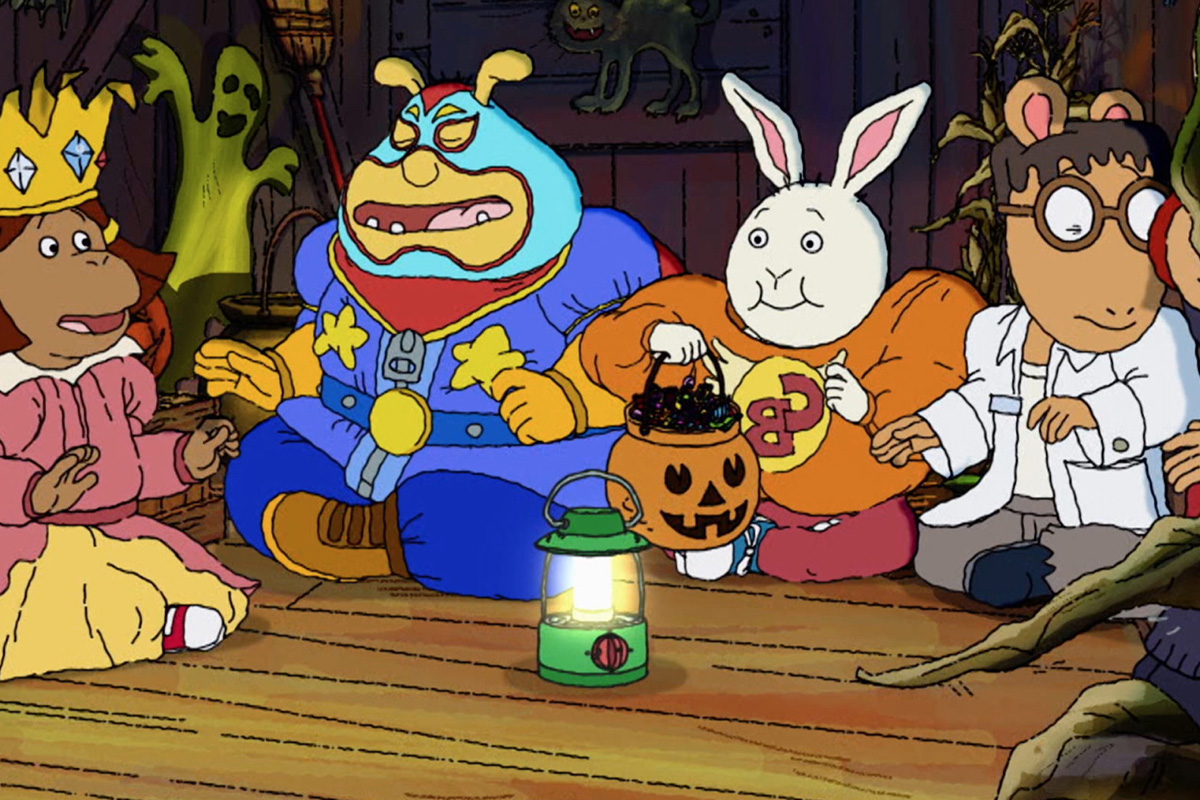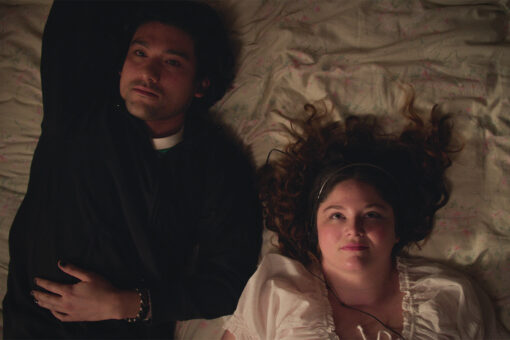Over the course of its 25-year run on public television, “Arthur” was no stranger to incorporating Jewish themes into its episodes. The now-defunct PBS Kids series (may peace be upon it) following an 8-year-old aardvark named Arthur showcased his monkey friend, the sporty, spunky Francine Frensky, attending her cousin’s bar mitzvah, explaining Hanukkah to her Elwood City friends and even fasting for Yom Kippur. It’s safe to say that “Arthur” continued to provide kids with powerful learning experiences and much-needed representation long after we all stopped watching, but did you know about the “Arthur” Halloween episode that was surprisingly… Jewish?
While retaining all the wholesome, comforting vibes every episode of “Arthur” manages to elicit, 2017’s “Arthur and the Haunted Tree House” is surprisingly spooky. The hour-long special is set on Halloween night at a sleepover Arthur is hosting in his — you guessed it — haunted treehouse. The episode is made up of scary-story-based vignettes that perfectly encapsulate the most wonderfully haunted time of year.
Arthur tells a tale about a possessed doll, Binky has a Poe-ian experience with Mr. Ratburn, Buster gets brussels sprouts in his candy basket, Muffy finds herself lost in a cemetery while trick-or-treating with her butler (as one does), and Francine, well, Francine tells just about the most Jewish story you could possibly have on a Halloween TV event. And it goes something like this:
At her last candy stop of the night, Francine is invited into the apartment unit of an unknown neighbor: the seemingly sweet Mrs. Saperstein. The name alone might tip you off, but things get explicitly Jewish when she steps inside and a tell-tale menorah is placed conveniently in the background of the old woman’s abode. While Mrs. Saperstein looks for candy, Francine discovers a strange picture on her coffee table: a creature made from clay that has been brought to life with magic — also known as a golem, or so Mrs. Saperstein explains. Ring any bells yet?
We’ll ignore the fact that Francine already broke the cardinal Halloween safety rule by entering a stranger’s apartment, but what Mrs. Saperstein does next is certainly an indicator that Francine may have been better off if she cut and ran without the candy. “I’d tell you a story,” Mrs. Saperstein says, “but I shouldn’t be frightening children like this.”
Mrs. Saperstein goes on to tell the tale of the golem in the photograph, which was taken in a small village near Prague in what appears to be the 1940s. In the village lived a violinist who played such beautiful music that he could make dead plants grow. One day, however, he was hit by a trolley and broke all of his fingers. Don’t worry, though, kids — no longer able to play the violin, he became wildly fascinated with magic, as well as incredibly angry and bitter at the world. After studying ancient texts, the ex-violinist learns how to make the golem, which he shapes like a rabbit and shoves a piece of his violin inside of in order to call it to life. All too soon, however, the creature becomes uncontrollable and wreaks havoc across the village.
“But how did you escape?” Francine rightfully questions when it seems as though the story has come to a close. To which Mrs. Saperstein replies, “who’s to say I did?”
Later, on her way to the slumber party, Francine goes back to the apartment to return a photo that had mistakenly fallen into her bag. This time a man, Mr. Saperstein, answers the door, only to explain to Francine that the person in the photo is his little sister, who disappeared in their village when they were children — never to be seen again! Uh… needless to say, we can see why Francine had the best scary story of the evening.
With all of this in mind, you might be saying to yourself: How did the golem of Prague, albeit one of the better-known Jewish folktales, find its way into a children’s TV show? And, what’s more, how did the golem find its way into a Halloween special?
Based on the show’s track record, it’s not entirely surprising that a core piece of Jewish history would come up in one of Francine’s storylines — but before we move any further, a quick fact-check is in order. While nobody can blame the “Arthur” creators for associating a story about a monster with a spooky holiday episode, the real story of the golem is not exactly how Mrs. Saperstein made it out to be. In truth, the golem of Prague was originally created to be a protector of the Jewish people, and only in some versions does he go on a violent rampage, the reason for which changes based on the adaptation you read. However, because it takes place so much later than the original tale (which took place in the late 1500s), it appears that old Mrs. Saperstein was simply telling the tale of a golem. And in that case, a lot of the story actually rings true.
In the “Arthur” adaptation, the violinist is clearly seen studying Kabbalah. In some of the oldest versions of a golem story, it is Kabbalist magic that brings a golem to life. Additionally, when the violinist uses a piece of his broken violin to bring the golem to life, it is a direct reference to the scroll the Rabbi of Prague inserts into the golem’s mouth to do the same. Even still, despite the fact that this retelling of the golem is cemented in truth and told in a manner that makes it digestible and entertaining to a kid, what is it doing in a Halloween special? It’s not as if golems are synonymous with Halloween, right?
Well, here is how this might have happened. In “Arthur and the Haunted Tree House,” Mrs. Saperstein’s retelling of her golem story looks eerily similar to a classic piece of literature we now associate with Halloween: Mary Shelley’s “Frankenstein.”
The resemblances between the two stories are clear. In fact, it is assumed by many scholars that the concept of Dr. Frankenstein’s monster was heavily inspired by the Jewish legend of the golem. And while we don’t usually consider Frankenstein’s Monster to be a golem, per se, it can be described as the Hebrew translation of the word — an image endowed with life — and even evokes the initial creation of Adam as a golem in the Talmud.
If you’re still not convinced, the classic clay monster appearing in “Arthur” isn’t even the first or only time a golem was referenced in a children’s Halloween special. Anyone else recall the golem made from frogs in “Halloweentown II: Kalabar’s Revenge”? Is “Halloweentown” surprisingly Jewish, too? That’s a deep dive for a different day.
For now, we can appreciate this little piece of Jewish history and representation that sneakily found its way into Halloween pop-culture. And for those looking to cozy up on the couch this month and take a trip down memory lane with Francine and friends, I won’t give any more spoilers. Let’s just say, Mrs. Saperstein’s story isn’t the last place the golem shows up in Elwood City that All Hallow’s Eve…



